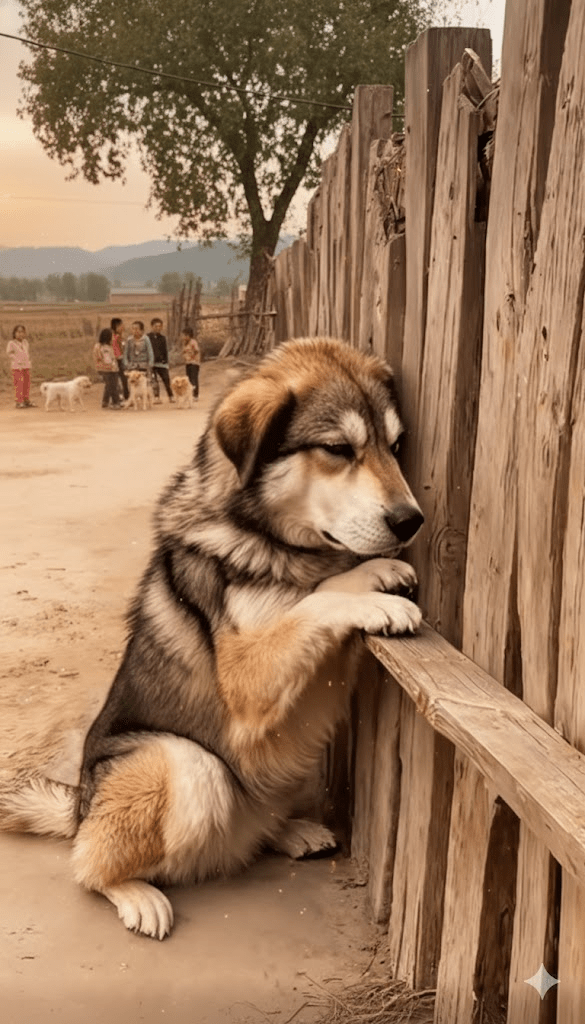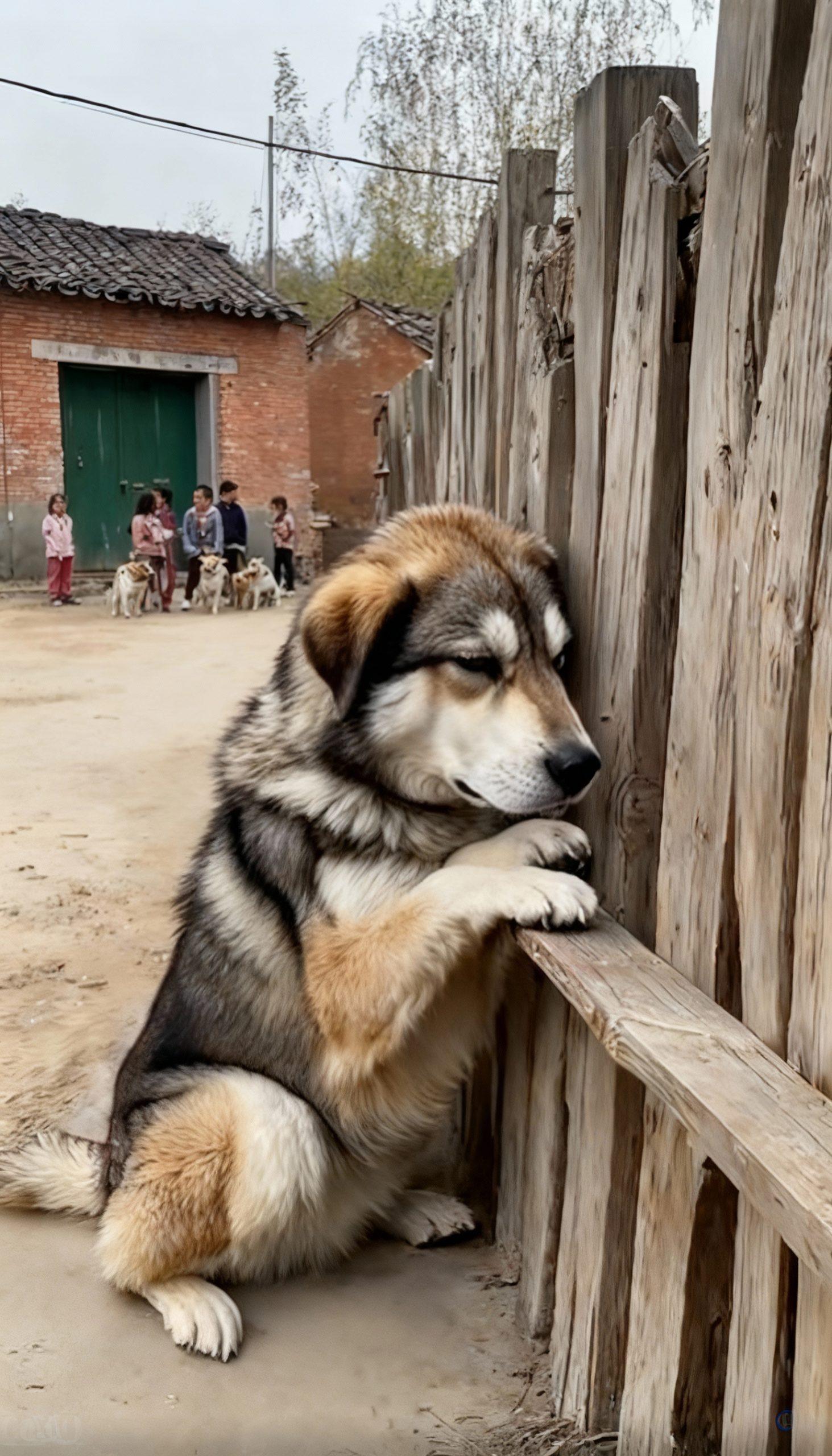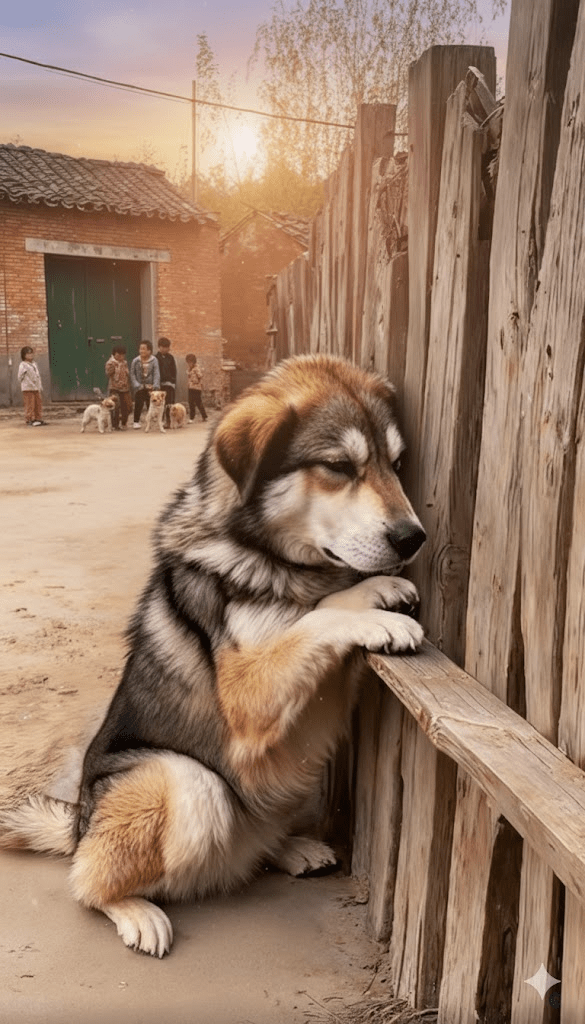The image captures a poignant moment: a large, fluffy dog, its fur a beautiful blend of black, brown, and cream, rests its front paws on a rustic wooden fence. Its head is tilted slightly, eyes gazing intently towards something beyond the frame, or perhaps, lost in thought. In the background, a cluster of children and other dogs are visible, seemingly engaged in lively interaction. This stark contrast between the lone dog’s contemplative stance and the distant hubbub immediately draws the viewer into a narrative of observation, perhaps even longing. The dog’s posture, almost human-like in its leaning, suggests a deep internal world, inviting us to ponder the nature of connection, community, and the subtle ways individuals navigate their place within a group. It’s a snapshot that transcends a simple depiction of an animal, evolving into a quiet meditation on belonging, the allure of interaction, and the moments of introspection that define our experiences, whether human or canine. This scene prompts us to consider the rich tapestry of social dynamics, both overt and understated, that shape our everyday lives.

From the quiet intensity of the image, we can infer a significant theme: the innate desire for social engagement, even when expressed through quiet observation. The dog is physically separated by the fence, yet its gaze firmly points towards the activity. This isn’t a gesture of aloofness, but rather one of keen interest. It highlights a universal truth: creatures, from the simplest to the most complex, are often drawn to the energy of others. This particular dog, with its thoughtful demeanor, seems to be processing the scene, perhaps weighing the pros and cons of joining, or simply enjoying the vicarious experience of community from a comfortable distance. This act of observing before engaging is a common behavioral pattern in many species, allowing for assessment and strategic integration.

The setting further amplifies this narrative. The rustic backdrop, with its simple brick houses and unpaved ground, suggests a rural or semi-rural environment where community bonds are often strong and interconnected. In such a setting, the absence or presence of an individual within a group can be more noticeable. The children and other dogs in the background represent a microcosm of this community, a vibrant hub of activity that stands in gentle contrast to the foreground subject. This visual dichotomy isn’t about exclusion, but rather about individual agency and the choice of participation. The dog’s quiet presence adds a layer of depth to the scene, implying that even within close-knit communities, there are moments of individual reflection and separate experience.

Another key aspect illuminated by this image is the spectrum of personalities within a social group. Not every individual is constantly at the center of attention or actively participating in every communal event. Some, like the dog in the foreground, might derive contentment from observation, from simply being present and aware of the goings-on. This quiet personality type is often crucial for group stability, providing a balance to more exuberant members. The dog’s calm demeanor suggests a level of self-sufficiency and an ability to find peace in its own company, while still appreciating the presence of others. This highlights the diversity of temperaments that exist within any social structure.
The wooden fence itself serves as a powerful metaphor. It is a physical barrier, yet one that allows for clear sight and connection. It represents the boundaries, both tangible and intangible, that exist within communities and individual relationships. These boundaries can define personal space, delineate roles, or simply offer a different perspective. In this case, the fence doesn’t seem to be a source of frustration for the dog, but rather a vantage point from which it can comfortably engage with the external world on its own terms. It’s a gentle reminder that proximity doesn’t always equate to engagement, and that sometimes, a little distance can offer a clearer view.







